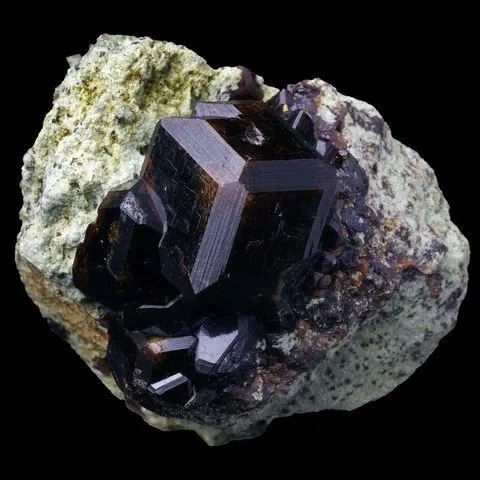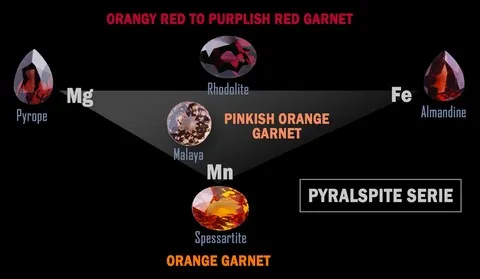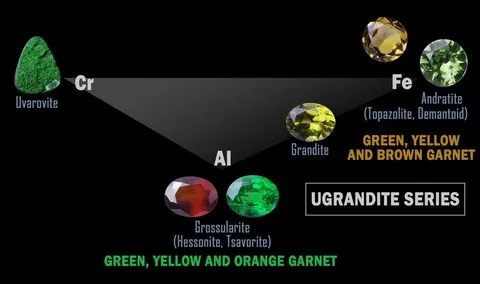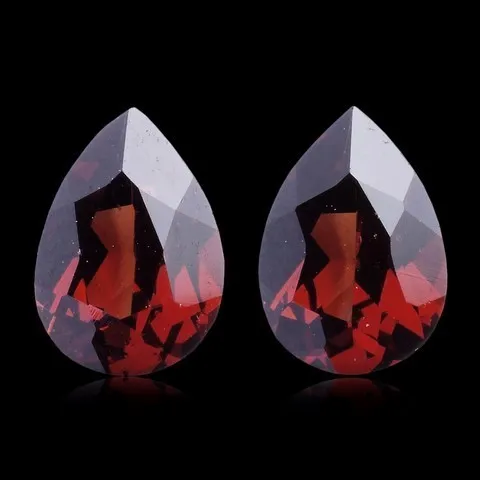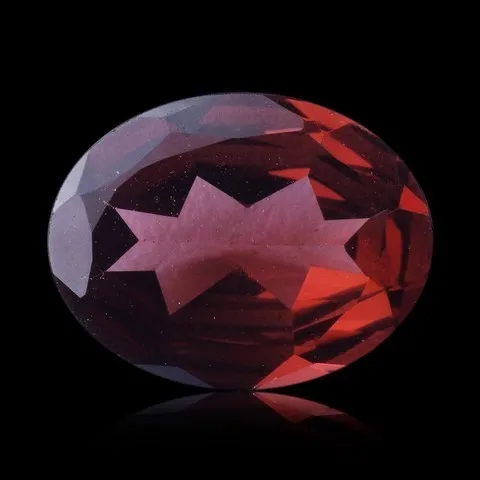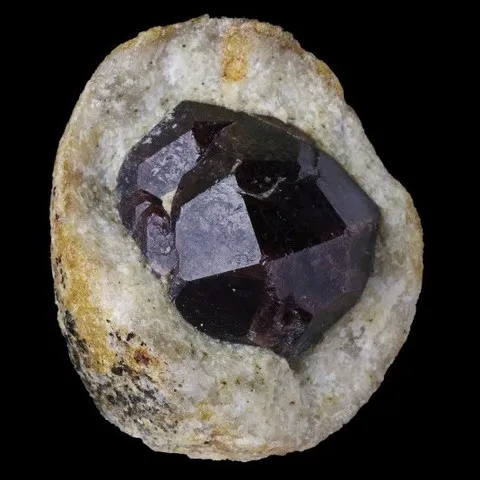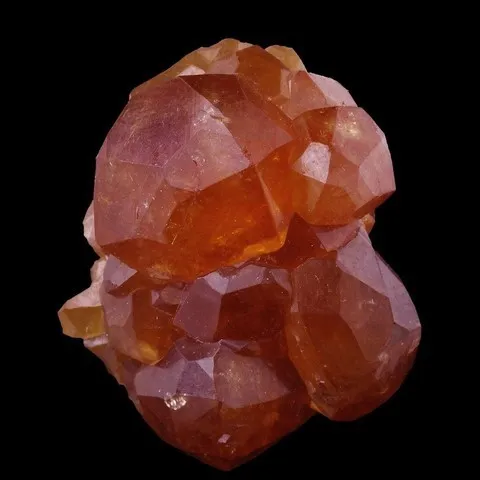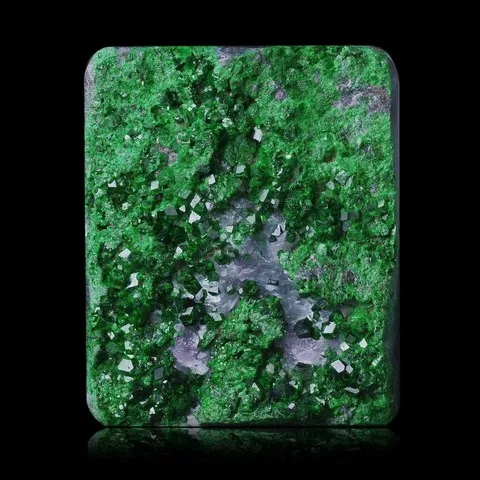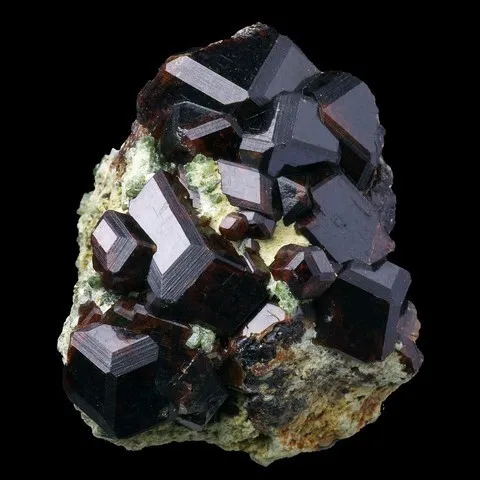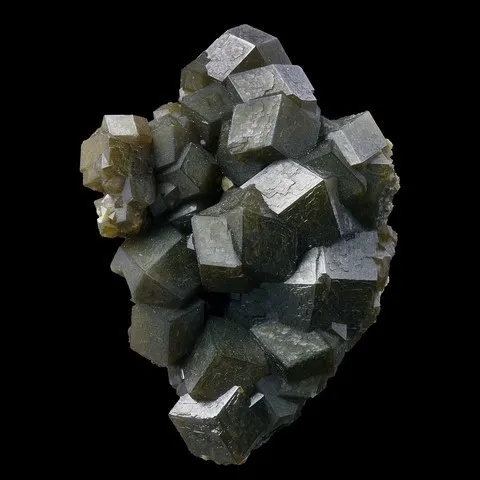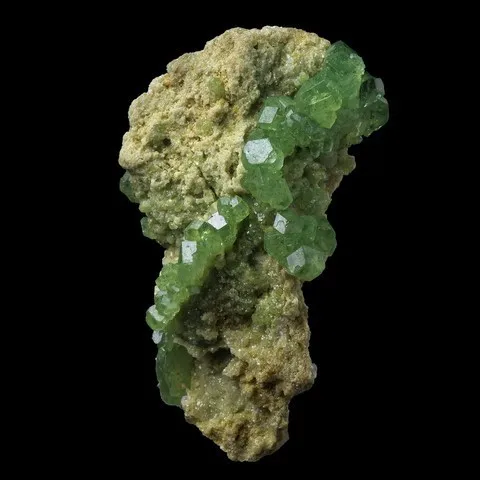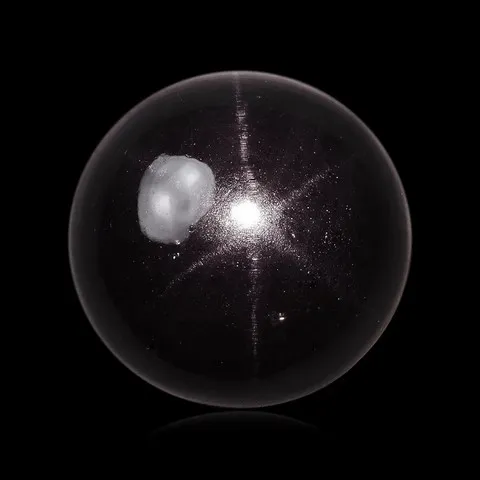GARNET
Class : Silicates
Subclass : Nesosilicates
Crystal system : Cubic
Chemistry : A3B2(SiO4)3
Rarity : Common
Garnets are a very important group of silicates. The minerals in this group share an identical structure that can integrate cations of varying sizes and valences, making it a very diverse and common group. Their structural formula is written A3B2(SiO4)3, where A and B respectively represent 8 coordination sites, occupied by large divalent cations (Ca2+, Mg2+, Fe2+ and Mn2+), and 6 coordination sites, occupied by trivalent cations of smaller sizes (Al3+, Fe3+, Cr3+). When site A is occupied by Ca2+, we speak of ugrandite or calcic garnets (acronym for Uvarovite, GRossularite, ANDradite, its 3 main representatives). When it is occupied by Mg2+, Fe2+ or Mn2+ we speak of pyralspite or aluminous garnets (acronym of PYRope, ALmandine, SPessartite). This group owes its name to the ancient French pome grenate (pomegranate), itself derived from the Latin malum granatum (grain apple) designating the pomegranate fruit because of its resemblance to its grains. It was named so around 1250 by the German philosopher Albert the Great (1200-1280).
Pyralspite series - Aluminous garnets :
Ugrandite series - Calcic garnets :
Some rare substitutions give rise to the formation of garnet varieties : melanite (variety of andratite) results from the replacement of a portion of Fe2+ by Ti4+ and a little Ca by Na in the A sites. Hydrogrossular contains up to 8.5% water in the form of (OH)4 groups. These groups are assumed to replace SiO4 tetrahedra with substitutions of Si4+ by 4H+.
Garnets form characteristic crystals, globular, isometric, most often trapezohedra or dodecahedra up to several decimeters. Their colors are variable : rarely red, rather reddish-brown, brown, pink, black, and sometimes green (demantoid is a chromium variety of andratite, tsavorite a chromium and vanadium variety, and the ouvarovite). Highly resistant to weathering, they can form true alluvial or littoral placers.
Garnets are very common minerals widely present in metamorphic rocks (mica-shists, amphibolites, pyroxenites, gneisses, anatexites) but also in magmatic rocks. These are valuable indicators of degree of metamorphism.
Almandine : it is the garnet of the metamorphic rocks. It is a mineral derived from the regional metamorphism of clay sediments that is formed from chlorites or micas depending on the degree of metamorphism. Pure almandine is typical of granulite facies. It is also present in contact or thermal metamorphic aureoles with muscovite and potassium feldspar. It is also an accessory mineral of some aluminous pegmatites. It is found in abundance in alluvium.
Spessartite : is the manganiferous garnet typical of skarns and assemblages rich in manganese, in which it coexists frequently with rhodonite and pyroxmangite. It is also an accessory mineral of some leucogranites and granitic pegmatites.
Uvarovite : it is the rarest of the "common" garnet, of a very beautiful emerald green color, it is formed during the hydrothermal alteration of chromite serpentinites, or during the contact metamorphism exerted by ultrabasic rocks mineralized in chromite on limestone or dolomitic rocks. His most famous site is Outokumpu in Finland.
Hydrogarnets (hydrogrossulars, hydrospessartites) are found in metamorphosed marls.
Garnet in the World
Garnet in France
Pyrope : it is found in garnet peridotites, however their outcrops are rare in France...
Spessartite : it is known in the pegmatites of Limousin (Chanteloube, Crozant).
Twinning
Twinning appear to be observable only with the polarizing microscope, the examination of thin sections then shows, especially in the calcium garnets, complex twinning ; the most common is a polysynthetic twinning having {510} as a twin plane.
Asterism
Fakes and synthetics
With regard to the mineralogical samples, gluings and assemblages can be practiced especially on the specimens of the Pakistani pegmatites (with topaz, pink apatite, fluorite, aquamarine, etc...).
Hardness : 6 to 7.5
Density : 3.5 to 4.3
Fracture : Conchoidal to irregular
Trace : White
TP : Opaque to transparent
IR : 1.72 to 1.94
Birefringence : 0
Optical character : None
Pleochroism : None
Fluorescence : None
Solubility : Hydrofluoric acid
Magnetism : Paramagnetic
Radioactivity : None

